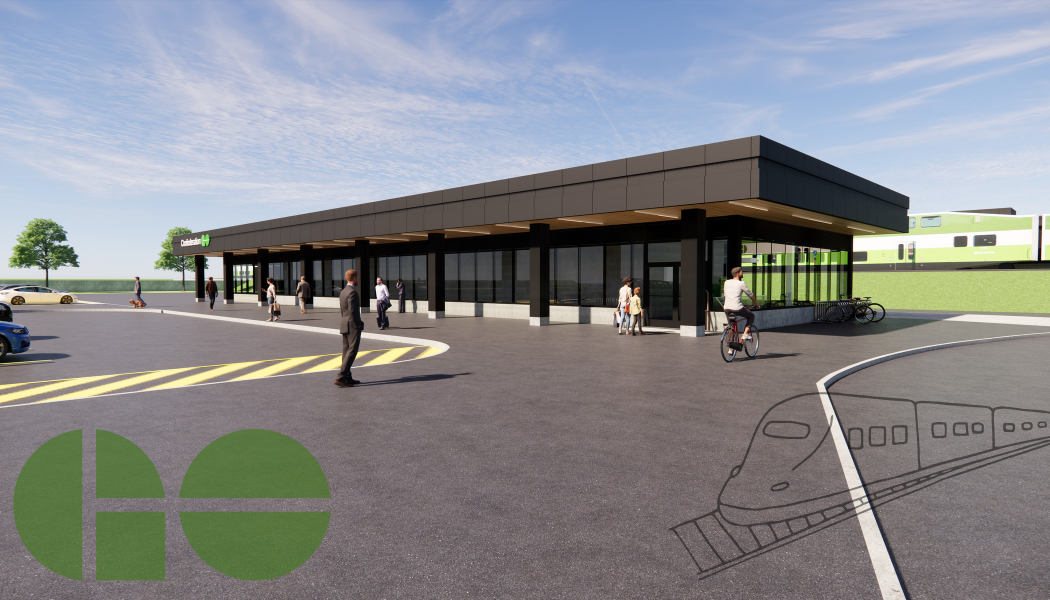Several new developments in rail transportation have occurred in the Greater Toronto and Hamilton areas. These developments involve efforts from GO Transit and VIA Rail to increase connectivity and convenience for rail users amidst efforts to combat traffic and increase convenience in the province.
On Oct. 2, Metrolinx — the transit agency in charge of GO Transit and its projects — announced the completion of Confederation GO station on the Lakeshore West Line. Located in east Hamilton near Stoney Creek, the station moves regular GO service further west along the line as it expands further into the Niagara Region.
Confederation GO will be serviced by all current Niagara bound trains and select trains that were operating out of the West Harbour Go terminus. This translates to 13 weekday and 15 weekend train trips and continued service from GO Bus routes 11 and 12. Rail service at the station is set to begin on Oct. 27.
The new station comes with all the bells and whistles of a modern transit station in the GTHA, including heated island platforms and 148 new parking spots for commuters.
The station is centred in provincial efforts to modernize GO Transit in the beleaguered GO expansion project, but comes as a welcome surprise for on-time projects.
Planned in 2016, the station opened to bus service in 2019, with construction for the rail platform starting in 2022 and ending in 2025. This timeline is far more efficient than the Eglington Crosstown, which recently announced that after 17 years of construction delays, its new and never-used service vehicles are aged to the point of being unfit for service.
The transit development in this project has not been easy for everyone. In Toronto the system has lost transit lines (line 3) as opposed to gaining any new ones, despite record population growth.
Metrolinx has been leading significant transit expansion projects, most immediately noticeable in the Niagara region. In 2022, the province made Niagara bound express trains — including stops in St. Catharines and Niagara Falls —year-round and has since been working to expand service into the region.
All in all, the opening of Confederation GO increases travel options and convenience for students and commuters alike in the GTA, especially those who live in the east Hamilton Stoney Creek area.
In the same vein, VIA Rail has been floating the idea of changing some existing trains from Toronto to Montreal to run exclusively as express trains between the two cities with no intermediate stops.
The proposal comes as late arrivals in the Quebec City to Windsor corridor have reached an all-time high. The corridor which many who do not wish to drive rely on for travelling the region.
The delays are a result of the brand-new train sets that VIA Rail acquired to replace its antiquated running fleet. The passenger operator was forced by Canadian National Railway (CN), the owner of the rail lines, to slow its new trains at all road-rail crossings — a move which has increased late arrivals to 80 per cent in 2024 — as opposed to 30 per cent for the same time in 2023.
The non-stop rail service between Toronto and Montreal was abruptly announced as a pilot project with little to no consultation by VIA Rail. The pilot aimed to reduce the travel time by around 30 to 40 minutes, which is around the same amount of delay added by the speed restrictions.
While the move aimed to increase user convenience within what little control VIA has over the nature of its operations, the move was met with criticism from the communities in between the two cities, who have seen a steady reduction in service and usability since the pandemic.
The pilot was paused due to a conflict with CN. While negotiations are underway, affected communities have begun to voice their concerns.
This concludes a week of new rail related announcements in the province and locally in the GTHA, as transit agencies strive to increase customer convenience amidst a myriad of operational and project woes.

